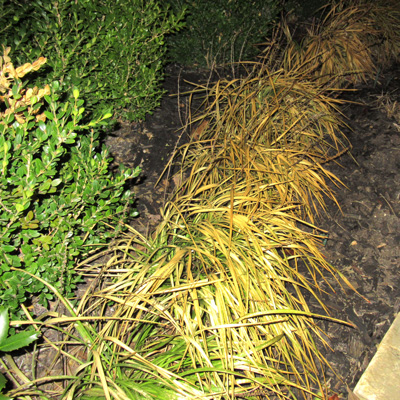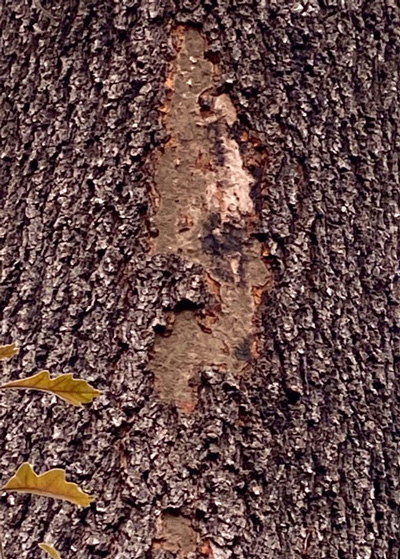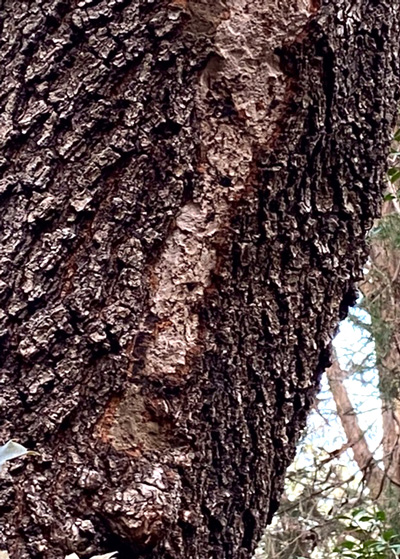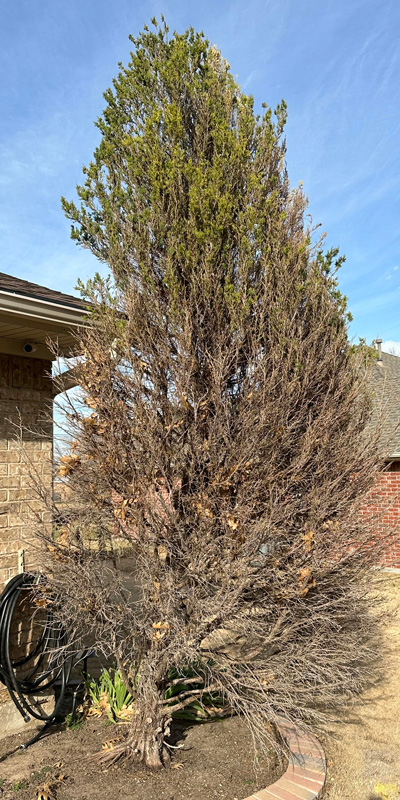Q&A – Ask Neil: January 19, 2023
(Please read these instructions carefully.)
Before you post your question, please look at recent issues to see if someone else has already asked it. You might find your answer there.
How to submit your question…
• Click the link provided below to post your question. After you submit your question, a new window will pop up giving you the address to which you can e-mail a photo to accompany your question. Clear, medium-resolution photos. (Try to avoid low-res thumbnail photos, please, in case I have to zoom in to see things.)
• Click here to post your question.
• Please only post your question one time.
• One question per reader, please.
• Please use this only for posting questions – not for standard emails.
• Watch for your answer in the following week’s e-gardens.
• I choose those of greatest general interest. For example, plant IDs seldom make the cut.
• I must have your first name or initials.
• I must have your city or county. (Texas is a very large state.)
QUESTION 1
WHAT DO WE DO NOW WITH A YARD THAT WAS DESTROYED BY ARMADILLOS LAST SUMMER?
Question: Last summer our backyard was destroyed by what we believe was armadillos. The activity has ceased for now, but we are left with numerous holes all over our yard. They range from 2 to 4 inches in diameter. What do we do now? Nell M., Denison.
Answer: I’m assuming the holes terminate at 2 to 4 inches and are not tunnels. If so, you can fill them with topsoil dug from elsewhere in your yard. However, the armadillos will return as the weather warms this spring. Somewhere in a concealed spot in your landscape or in adjacent property there will be an obscured hole where they are hibernating over the winter. We have armadillos on our rural property as well. I have had outstanding results using the Havahart humane traps built for raccoons. We erect temporary fences in their walkways with low chicken wire to direct the armadillos into the traps. We use 10- or 15-foot lengths of the wire to make “funnels” with the traps at the necks of the funnels. There is a remote location away from all homes and farmlands on US Corps of Engineers property where we can release them. (I can’t bring myself to kill them.)
QUESTION 2
WHEN SHOULD I TRIM LIRIOPE THAT WAS BROWNED BY THE COLD A MONTH AGO?
Question: When is the best time to trim liriope that was browned by the cold a month ago? What is the best way to do so? T.N., Parker.

Answer: It’s unusual for liriope to be hurt that badly in the DFW area, but I’ve seen many beds that look like yours. It’s very fibrous. I would use a powerful gasoline hedge trimmer to cut it back, and I’d do so as quickly as possible. You definitely do not want to cut through the “candles” of new leaves as they start emerging. There is no reason to wait. I would cut back to within 2-3 inches of the ground.
QUESTION 3
MEYER LEMON FLOWERED INSIDE, BUT FRUIT FELL OFF. HOW CAN I GET THE TREE BACK ON SCHEDULE?
Question: Last year our potted Meyer lemon flowered in December after being moved inside for the winter. Whatever small fruit had formed, however, fell off the tree when it was moved outside in the spring. How can we get this tree back on the schedule? Jim P., Far North Dallas.
Answer: There could be a couple of causes. The plant might have gotten too dry, or the humidity might have been extremely low indoors. Either could have been detrimental to the tree as a whole. However, the thing that strikes my mind first is that the flowers may not have gotten pollinated. While Meyer lemons are self-pollinating (meaning that a second variety is not required), there is no wind, and there are no bees to carry the pollen from flower to flower indoors. If it is possible to take the plant outside while it is blooming and when winter days are warm, that might improve pollination greatly.
QUESTION 4
WHY IS OLDER OAK LOSING AREAS OF BARK?
Question: We have an older oak tree that is losing large areas of bark (mostly on the southeast side of the tree). I wonder if this might be canker. What can we do to help the tree? Sharon L., Holly Lake Ranch, Wood County.


Answer: You may be referring to Hypoxylon canker, the fungus that attacked so many post oaks following the biblical drought of 2011. It was still showing up 5 and 6 years later. This might be damage appearing from the extreme cold of two years ago, or it could even be very old damage from 12 years ago. I can’t tell enough from the photos to be sure. I would suggest you contact an International Society of Arboriculture certified arborist for an on-site inspection of the tree. Hopefully you can find one who serves your area. You could also contact the Texas Plant Clinic at Texas A&M (see their website online https://plantclinic.tamu.edu/) and inquire about having them culture samples of the bark and interior wood for the fungus. I will warn you that it’s hard to turn that disease around once it has attacked a weak, old post oak.
QUESTION 5
WHAT ARE THE TOMATO VARIETIES THAT CAN WITHSTAND TEXAS AND OKLAHOMA SUMMER TEMPERATURES?
Question: You mentioned two tomato varieties that could withstand the high temperatures in Texas and Oklahoma in the summer. I can’t find them. Could you please mention them again? Phillip W., Checotah.
Answer: Actually, there would have been several. I always point out that we should avoid large-fruiting varieties, such as Beefsteak and Big Boy. They will not set fruit in high temperatures (90F and above). The most productive varieties are the smaller types such as Super Sweet 100, Red Cherry, Yellow Pear, Porter, Roma, Super Fantastic, Better Boy and Celebrity.
QUESTION 6
WILL OLD CARDBOARD BOXES STOP WEEDS IN PATHWAYS?
Question: Can I use old cardboard boxes in gravel and bark paths to stop weeds and grasses from growing? What other options would you suggest? Karen R., Cooke County.
Answer: The boxes might help for a short while, but they decay within a few months, so that’s about all you could count on and then you’re back where you started. I use finely ground pine bark mulch. I don’t like the feel of pea gravel squishing around beneath my shoes, plus it can get picked up by line trimmers, blowers, etc. I use a glyphosate spray applied directly to any weeds that develop. They have really been no major problem in our gardens. I can’t remember the last time I had to spray.
QUESTION 7
WILL OUR EVERGREEN REBOUND, OR SHOULD IT BE TAKEN OUT?
Question: Our evergreen tree was an unfortunate victim of the bagworm infestation last spring. By the time we noticed it and treated it, the damage had already been done. Will the tree recover, or should it be taken out? Liz W., Justin, Denton County.

Answer: If I answer the way I would handle it myself it will make me feel like an executioner. The plant will survive, but I don’t think you’re going to have any green shoots on the bottom half of it. You have already left it there for seven or eight months since it was attacked. If you wanted to wait three or four months longer to see if it puts out new growth this spring, you could certainly do so. However, I don’t believe it’s ever going to look right. If it were my tree, however, I would be replacing it within the next few weeks.
QUESTION 8
WHICH TALL VARIETIES OF CRAPE MYRTLES ARE MOST LIKELY TO BE HURT BY THE COLD?
Question: You have mentioned that some crape myrtle varieties have been hurt more by the cold than others. Which tall varieties (greater than 18 feet at maturity) should we avoid here? Martha S., Haltom City, Tarrant County.
Answer: Through the Crape Myrtle Trails of McKinney, we have planted more than 30,000 crape myrtles in our city. Our goal has been to compare all of the known varieties in a variety of factors, including winter hardiness. There are five tall types that have repeatedly been hurt by the cold in the Dallas/Fort Worth area. They are Natchez, Sioux, Muskogee, Tuscarora, and Country Red. Occasionally we will see damage done to other tall varieties. Additionally, the miniature, weeping varieties (with Louisiana names like Lafayette, Baton Rouge, New Orleans and others) that stay at 2 feet and shorter are also killed by cold in the Metroplex area.
